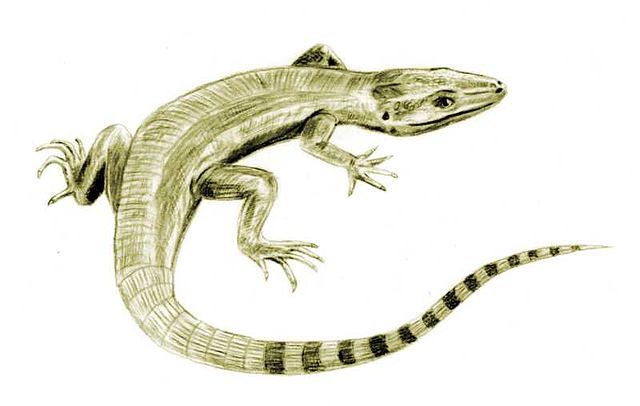Romer's gap is an example of an apparent gap in the tetrapod fossil record used in the study of evolutionary biology. Such gaps represent periods from which excavators have not yet found relevant fossils. Romer's gap is named after paleontologist Alfred Romer, who first recognised it in 1956. Recent discoveries in Scotland are beginning to close this gap in palaeontological knowledge.
Crassigyrinus, a secondarily aquatic non-amniote tetrapod from Romer's gap
The bank of the Whiteadder Water in Scotland is one of the few known localities bearing fossils of tetrapods from Romer's gap.
Amniotes are tetrapod vertebrate animals belonging to the clade Amniota, a large group that comprises the vast majority of living terrestrial and semiaquatic vertebrates. Amniotes evolved from amphibian ancestors during the Carboniferous period and further diverged into two groups, namely the sauropsids and synapsids. They are distinguished from the other living tetrapod clade — the non-amniote lissamphibians — by the development of three extraembryonic membranes, thicker and keratinized skin, and costal respiration.
Amniote
Archaeothyris, one of the most basal synapsids, first appears in the fossil records about 306 million years ago.
By the Mesozoic, 150 million years ago, sauropsids included the largest animals anywhere. Shown are some late Jurassic dinosaurs, including the early bird Archaeopteryx perched on a tree stump.





